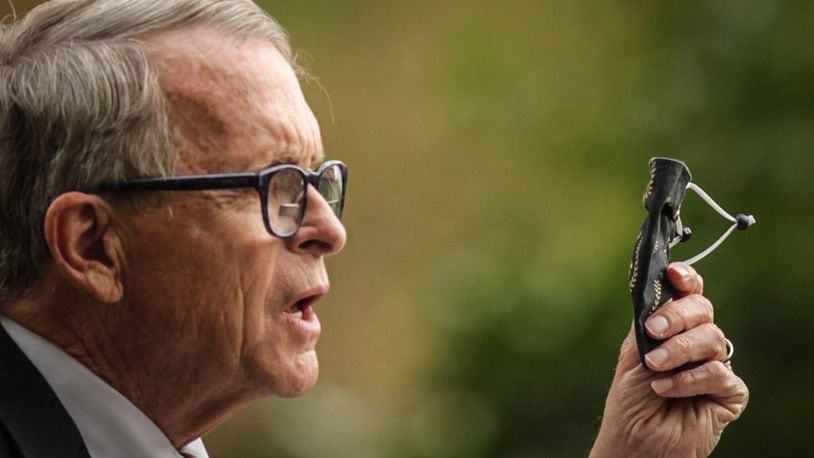The governor noted that most Ohioans did well at limiting gatherings, but there were some exceptions. He added that going into the Christmas holiday, which is longer, it’s important to continue limiting contact to prevent another surge in cases.
“Before Thanksgiving we very concerned about a potential surge in cases,” DeWine said. “Thankfully we have not seen cases go up dramatically. If we can get through Christmas and New Year’s without a significant surge, we will be much better positioned to start 2021 against this virus.”
While Ohioans did a good job at preventing a post-Thanksgiving spoke, Dr. Bruce Vanderhoff, Ohio Department of Health chief medical officer, said that hospitals are still “extremely busy with COVID-19.”
“Adding a post holiday spike to that would create a terrible situation,” he said. “What’s important to remember is the actions that we are taking right now will show up in weeks. So we can’t let ourselves be lulled into a sense of complacency.”
This @nytimes anonymized data map shows that people in Ohio greatly reduced their travel and contacts with others over Thanksgiving. Compared to last year, there was a 60-70% reduction in the number of contacts people had over the holiday. pic.twitter.com/khOFC08q9X
— Governor Mike DeWine (@GovMikeDeWine) December 21, 2020
More than 6,700 people in Ohio have received the first of two coronavirus shots as of Sunday.
Both the Pfizer and Moderna vaccine require two shots to be vaccinated. DeWine previously said the state is expected to start administering second shots in January.
Under phase 1A of the state’s vaccine distribution plan, the shot is being administered to frontline health care workers and staff and residents at long-term care facilities.
As hospitals continue to vaccinate their frontline workers, the mass vaccination effort is not expected to have an impact on the already stressed health care workers.
“The good news is our hospitals vaccinate their workforce in large numbers every year,” said Vanderhoff.
He added that at this point it is too early for Ohio to see an impact from vaccinations.
“It’s much too soon for us to expect vaccines to be bending that curve,” Vanderhoff said. “It still depends on you and me to continue the good work that began before Thanksgiving.”
A CDC advisory panel Sunday recommended that people 75 and older and essential workers such as firefighters, police teachers and grocery store workers be next in line for the vaccine, according to the Associated Press.
DeWine noted that the recommendation covers a large population and that the state is continuing to work on administering the vaccine strategically to save the most lives possible.
As Ohio continues to determine its guidelines the state will release the information, he said.
For the fourth straight day, the number of daily coronavirus cases reported in Ohio decreased, with 6,548 added Monday, according to the Ohio Department of Health.
It is the lowest number of daily cases reported in the last 21 days. On Dec. 16, technical issues resulted in ODH under reporting cases.
Ohio has recorded 629,354 total cases throughout the pandemic.
Seventy-five deaths were reported Monday, bringing the total to 8,122.
There were 301 daily hospitalizations reported in Ohio for a total of 35,048.
The state’s first shipment of Pfizer vaccines arrived on Monday, with pharmacies starting a federal vaccination program in nursing homes and long-term care facilities on Friday in Ohio.
There were 301 daily hospitalizations reported in Ohio for a total of 35,048.
The state’s first shipment of Pfizer vaccines arrived on Monday, with pharmacies starting a federal vaccination program in nursing homes and long-term care facilities on Friday in Ohio.
About the Author
